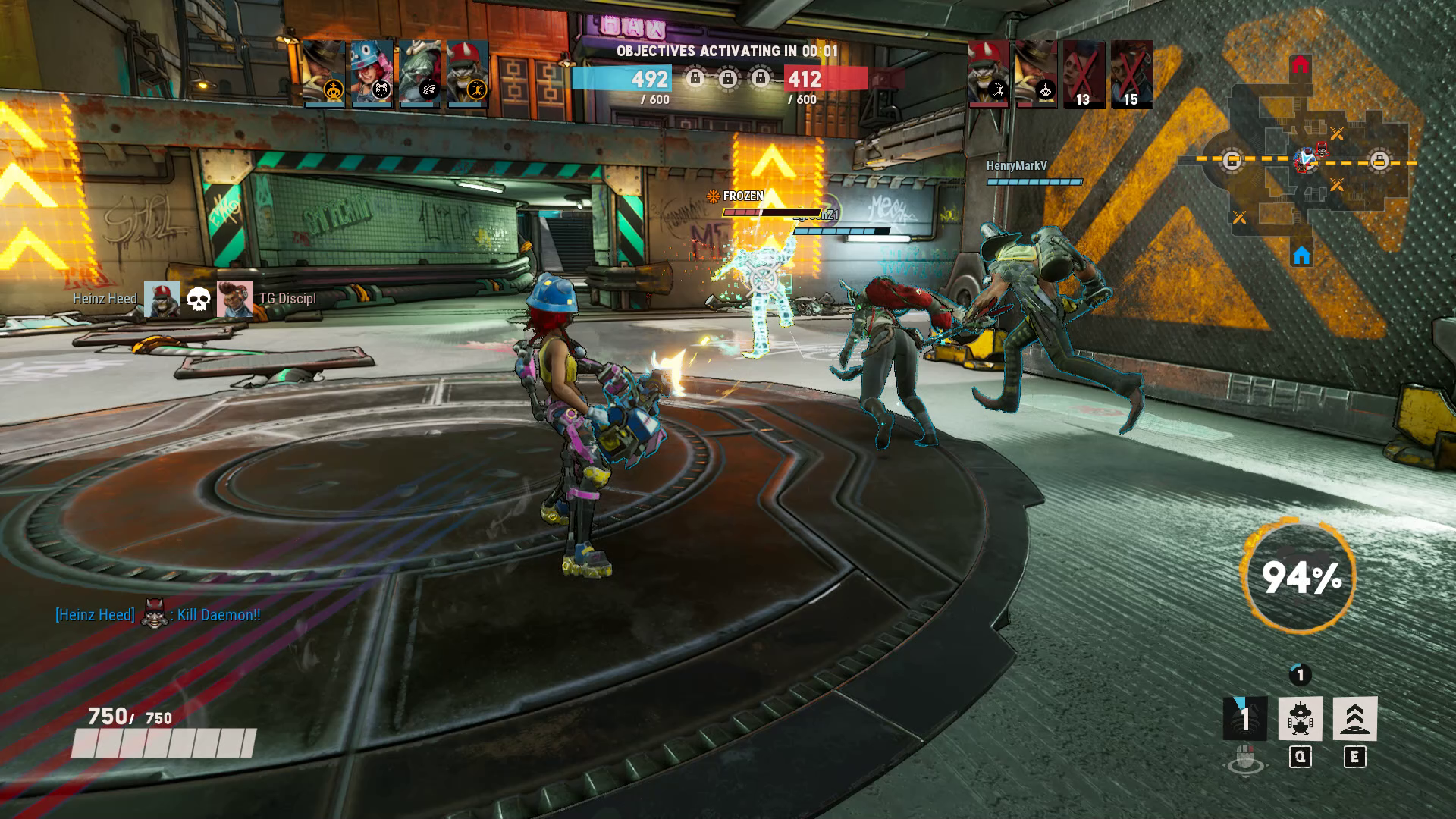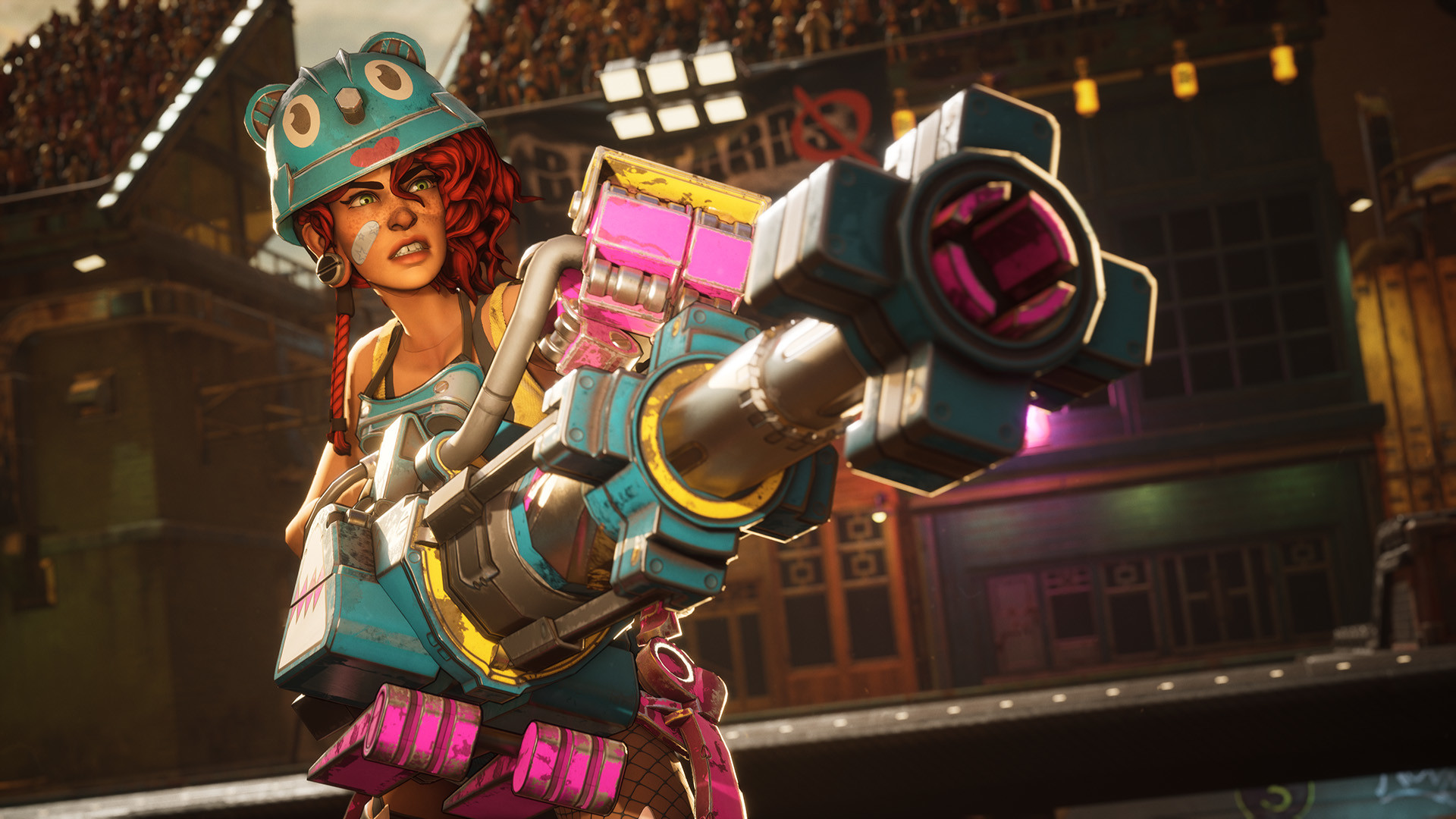Our Verdict
Bleeding Edge's characters are cool, but the combat is too shallow to hold attention for long.
PC Gamer's got your back
What is it? A hero brawler with MOBA-lite combat and objective modes.
Reviewed on RTX 2060, Ryzen 5 2600 3.4Ghz, 16 GB RAM
Price $30/£25 on Steam; included with Xbox Game Pass
Release date Out now
Publisher Microsoft
Developer Ninja Theory
Multiplayer 4v4 online
Link: Official site
Bleeding Edge may be a 4v4 'brawler' in that ranged attacks are secondary, but don't take that to mean that it plays like Ninja Theory's stylish DmC: Devil May Cry. It rewards timing, positioning, and cooldown management over twitch skill and fanciful 75-hit combo chains, and without a complex meta or satisfying combat, mostly whiffs on the 'Overwatch-but-melee' promise.
Like Overwatch, Bleeding Edge includes diverse characters, abilities, counters, and strict roles grouped by damage, tank, and support. I thought I'd be feeling hero fatigue at this point, but I do really love the stories behind Bleeding Edge's 11 fighters. The themes of self-augmentation and mobility inspire insanely cool characters like Buttercup, a biker who's basically a human motorcycle, and Kulev, a 125-year-old professor who achieved immortality by transferring his consciousness to a robotic viper that controls his zombified body. The industrial grunge and absurdity reminds me of Borderlands, but Bleeding Edge thankfully stops short of the dire humor.
Every fighter has either a melee or ranged basic attack, three special abilities, and an ultimate. Most abilities don't have to be aimed, so winning big teamfights is all about focusing damage in the right direction while capturing map objectives. A compelling byproduct of Bleeding Edge's focus on melee combat is the importance of verticality and movement as a way to avoid enemies and pick fights. The fighter I've been playing most, ZeroCool, is a Mercy-like support with almost no offensive capability. I'm toast if any enemies gang up on me, so I have to stay close enough to heal allies and use his double jump to retreat to the high ground when things get hairy. It's fun to make a narrow escape from a bloodthirsty tank with two machetes, and it's something I couldn't do if this were a shooter where I could be headshot from across the map.
Still, it's a thin layer of planning in what is otherwise a shallow meta. Part of the fun of hero games is theory crafting team compositions and potential counters that enemies won't expect. I haven't noticed that potential across Bleeding Edge's roster. Damage fighters feel more or less the same as tanks, but with less health. You can modify your playstyle a bit by equipping mods outside of matches, but the ones I've used so far are just slight boosts to abilities.
Right now, Bleeding Edge only has four maps and two modes. The king of the hill-type objective mode gives everyone a good reason to bundle up and duke it out, but things get messier in Power Cells, where teams run around the map collecting power cells and turning them in to score points. I think the idea is to encourage teams to split up, but my friends and I found it easier to stay grouped up and gang up on enemies to steal their cells.
When I was playing alone, it was noticeably harder to get teammates on the same page. Everyone would branch off to different corners of the map and get trounced by tanks. There's a pretty good ping mechanic that I often used to rally the troops, but many wouldn't listen or notice. I wish I could choose to only play the objective mode since everyone at least sticks together there, but it's completely random.
There's no reason to split up, so every fight is two clashing blobs of color and particle effects.
Both modes are made a little more exciting thanks to environmental hazards that flank key objective sites. If you're not careful, you could get run over by a train, blown up by rockets, or zapped by electric traps. Some character abilities, like Buttercup's reeling chain, can combo with these hazards by tossing enemies straight into danger.
Bleeding Edge's melee combat should be its centerpiece, but it's pretty dull. I can sense faint echoes of DmC in Daemon's beautiful sword strikes and Makutu's satisfying uppercut, but the fighting system is more-or-less mashing mashing left-click while waiting for abilities to come off cooldowns. It's no different from a basic right-click attack in a MOBA, but Bleeding Edge is missing the deep item building and coordination that adds meaning to a teamfight in Dota 2. There's no reason to split up, so every fight is two clashing blobs of color and particle effects.

And as much as I enjoy the look of Bleeding Edge's roster, some abilities are so much like Overwatch's that it's distracting. The most noticeable culprit is Makutu, a tank character with suspiciously similar skills to Overwatch's Lúcio. The towering strongman cycles between stances that boost speed or heals teammates around him (except the colors are swapped so that yellow is for speed and green is health, so it's totally different). There's also Gizmo, a damage hero that summons a pink mech with machine guns as one of her ultimates in a similar fashion to D.Va. I'm no stranger to the long history of MOBAs lifting from each other, but some of Bleeding Edge's are so recognizable it's uncomfortable, and that's especially disappointing when the characters are otherwise so original and cool.
Without an expansive metagame or fun combat, Bleeding Edge gets boring fast. I can feel my fun waning a few dozen matches in as I've learned the ins and outs of each fighter. Playing with friends on mics is more appealing, but my friend groups are much more likely to gravitate to a deeper game with more opportunities for our individual skills to shine.
It'd take a huge overhaul of the combat to get me back on board
The PC version ran well for me, at least, but there's currently an 60 fps cap that Ninja Theory is working to lift. The game suggests playing with a controller, though I had a way better time with the precise camera movement my mouse allowed.
The bright side of Bleeding Edge's simplicity is accessibility. New players might have a hard time playing a squishy support that can't fight back, but anyone with a hero game under their belt can read a fighter's description and quickly recognize the role. I just have a hard time imagining Bleeding Edge becoming anyone's 'main' game when there are lots of games that are more fun, engaging, and already have millions of invested players. Things might be different if Bleeding Edge were free-to-play, but it's $30 on Steam if you're not an Xbox Game Pass subscriber. It was easy to find matches during launch week, but that could change as the weeks go on.
It's clear that Ninja Theory has plans to stick with Bleeding Edge: The official website already lists a new fighter (a dolphin in a mechanized water tank named Mekko) and art for an additional map. I'll be keeping an eye on Bleeding Edge to see what other bizarre character designs they cook up, but it'd take a huge overhaul of the combat to get me back on board. Barring that, I'm not hopeful for its future.
Bleeding Edge's characters are cool, but the combat is too shallow to hold attention for long.

Morgan has been writing for PC Gamer since 2018, first as a freelancer and currently as a staff writer. He has also appeared on Polygon, Kotaku, Fanbyte, and PCGamesN. Before freelancing, he spent most of high school and all of college writing at small gaming sites that didn't pay him. He's very happy to have a real job now. Morgan is a beat writer following the latest and greatest shooters and the communities that play them. He also writes general news, reviews, features, the occasional guide, and bad jokes in Slack. Twist his arm, and he'll even write about a boring strategy game. Please don't, though.


